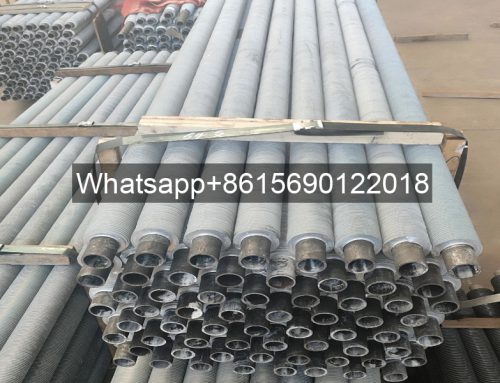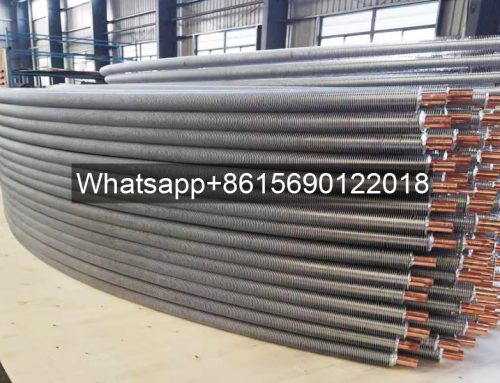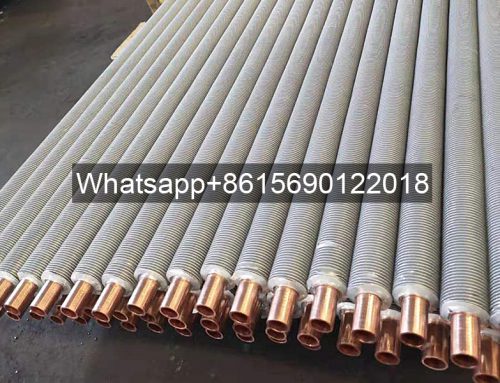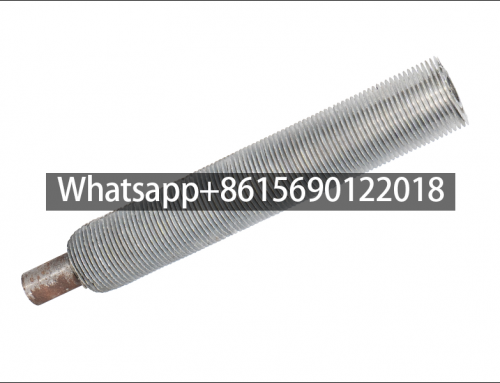Project Description

- Product Name: Fin Tube Heat Sink for Dryer | Aluminum Extruded Finned Tube
- Leave Your Message
Fin Tube Heat Sink for Dryer
Fin Tube Heat Sink for Dryer is a component used for heat dissipation in the dryer. The dryer generates a lot of heat during operation. In order to prevent heat accumulation and overheating of the machine, the dryer usually conducts the heat to the outside air through the heat sink.
Fin Tube Heat Sink for Dryer is usually made of metal materials, such as aluminum or copper. They are usually curved to increase the surface area and improve the heat dissipation effect. The hot air inside the dryer will be directed to the fin tube heat sink for dryer. By contacting the metal surface of the heat sink, the heat will be quickly transferred to the heat sink, and then the fins or other designs on the heat sink will increase the area and dissipate the heat to the surrounding air.
Through the fin tube heat sink for dryer, the dryer can reduce the temperature, maintain the normal operating temperature range, and ensure the stability of the machine. In order to maintain the heat dissipation effect of the dryer, the dust and debris on the heat sink should be cleaned regularly to ensure that the air can flow freely, thereby improving the performance and life of the dryer.
What is Fin Tube Heat Sink for Dryer?
Finned tubes for dryers are a highly efficient heat transfer element, which is widely used in drying equipment to improve drying efficiency and thermal energy utilization. It is mainly composed of two parts: base tube and fins. The base tube is usually made of metal materials such as steel pipes, while the fins are attached to the outer surface of the base tube, which increases the heat transfer efficiency by increasing the heat dissipation area of the base tube.
Structural characteristics of finned tube heat dissipation tubes for dryers
–Large heat transfer area:
A large number of fins are attached to the outer surface of the finned tube, which greatly increases the heat transfer area and thus improves the heat transfer efficiency.
–Good heat transfer effect:
The shape and arrangement of the fins are carefully designed to form vortices when the fluid flows through the fins, increasing the heat exchange effect between the fluid and the fins.
–Corrosion-resistant and high-temperature-resistant:
Finned tubes are usually made of corrosion-resistant and high-temperature-resistant materials, which can adapt to various harsh working environments.
–Simple structure and easy maintenance:
The finned tube has a simple structure, is easy to install and maintain, and can save a lot of time and cost.
Application fields of finned tube heat sink for dryer
Finned tube heat sink for dryer is widely used in various drying equipment, such as food dryer, chemical raw material dryer, textile dryer, etc. In these equipment, finned tube effectively transfers heat to the material, making it dry quickly. In addition, finned tube can also be used in large-area heating places such as industrial greenhouses and industrial workshops to provide stable and efficient heat supply.
Manufacturing process of finned tube heat sink for dryer
–Material preparation:
Select high-quality raw materials such as steel pipes, aluminum plates, etc., and carry out necessary inspections and pretreatments.
–Fin forming:
Use mechanical forming, stamping forming, rolling forming and other methods to process metal sheets into fins with certain shapes and sizes.
–Fin and base tube composite:
The formed fins are composited with the base tube, and the fins are usually firmly welded to the base tube by high-frequency welding, argon arc welding and other welding methods.
–Heat treatment and surface treatment:
heat treatment is used to eliminate welding stress and improve the mechanical properties and corrosion resistance of the finned tubes; surface treatment such as spraying and electroplating is also performed to improve the corrosion resistance and service life of the finned tubes.
–Inspection and testing:
strict inspection and testing are carried out on the manufactured finned tubes to ensure that their quality and performance meet the requirements.





